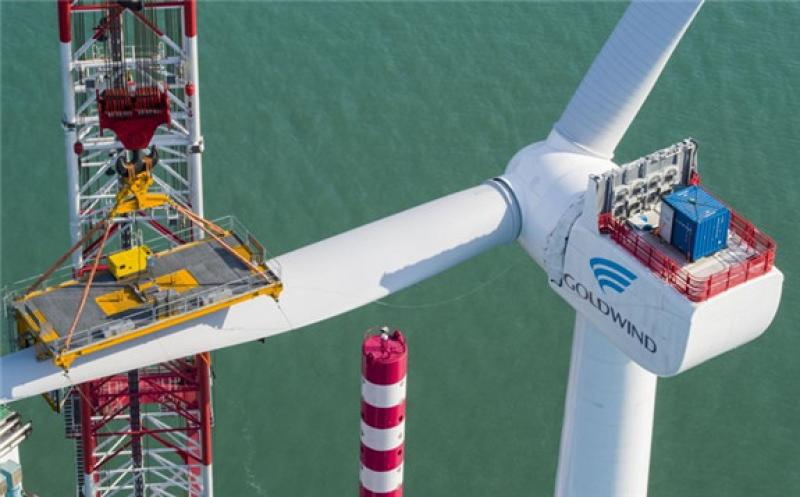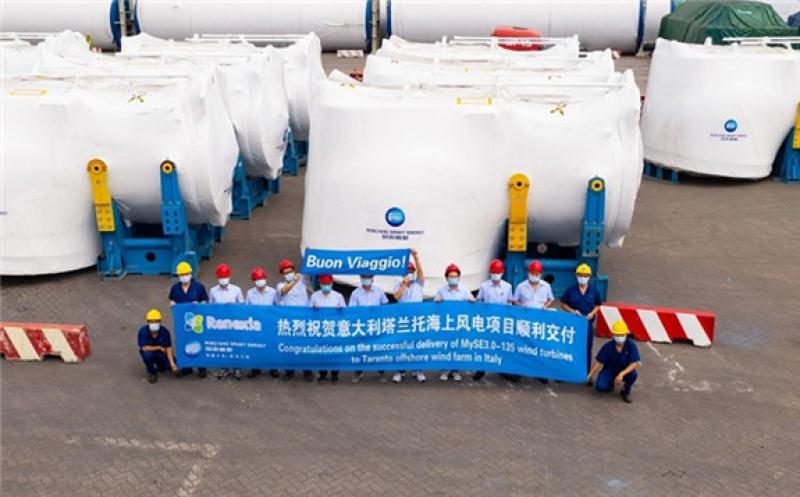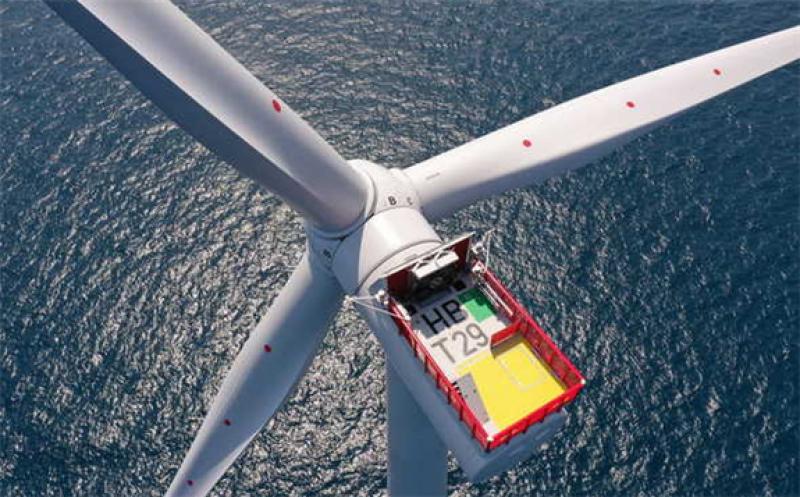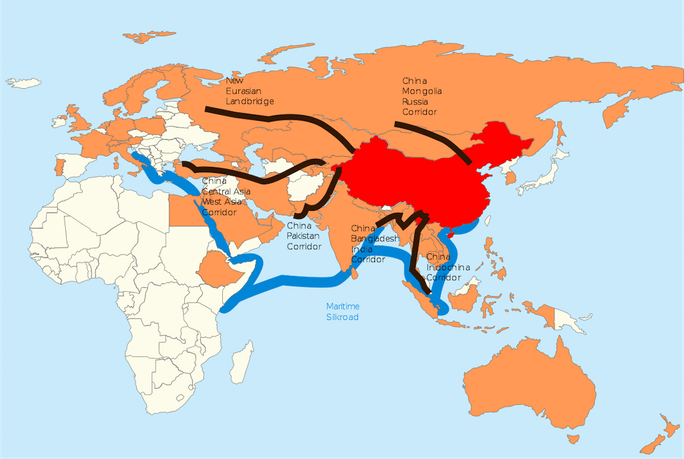
The "New Silk Road" or Belt and Road Initiative is an ambitious project expanding China's trade and industrial reach into the rest of Asia and the world. Powered by traditional fossil energy sources, such a massive project creates another source pumping tons of CO2 into the atmosphere for decades to come. There is an alternative.
China has a penchant for building things in a big way. That's certainly the case with the Silk Road Economic Belt and the 21st Century Maritime Silk Road, a tremendously ambitious investment and infrastructure initiative that President Xi Jinping announced in 2013, hearkening back to and expanding significantly upon the ancient Silk Road that linked countries and markets across the Eurasian continent.
Now known collectively as the Belt and Road Initiative (BRI), or more informally the New Silk Road, 126 countries home to some 1.1 billion people have signed on as partners to the initiative.
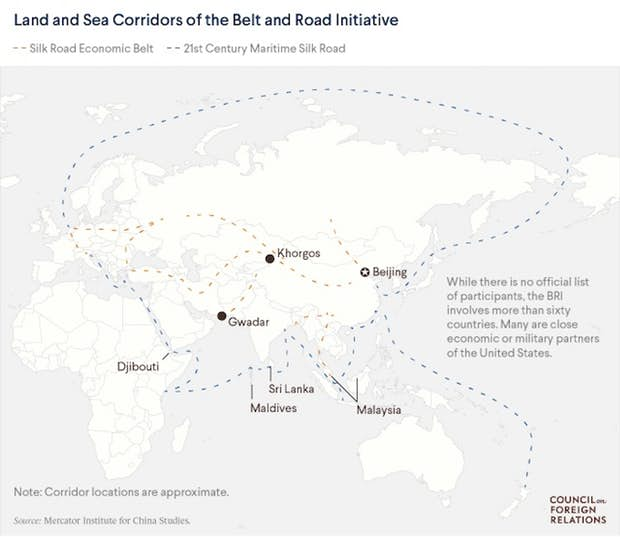 Council on Foreign Relations
Council on Foreign Relations
Building all that new infrastructure and spurring industrial development, commerce, and international trade along the New Silk Road has raised concerns about energy and the potential for a huge increase in greenhouse gas (GHG) emissions should fossil fuels be the New Silk Road's primary energy resource, as is the case at present.
"Potential further expansion of carbon-intensive power plants in this region would create a significant new source of carbon emissions and, even worse, once these plants are constructed, they would be expected to operate over multiple decades, adding CO2 continuously to the atmosphere," warn the authors of The Potential of Photovoltaics to Power the Belt and Road Initiative.
The researchers see a cost-effective, more sustainable, clean energy alternative. "Solar power could serve as an alternative to coal. Using high-resolution data, we evaluated on an hourly basis the potential of solar electricity over the BRI region with systematic consideration of the impacting factors. Results indicate that solar power could provide 448.9 PWh (petawatt, or billion million, hours) of electricity annually, 3.7% of which could meet the regional electricity demand projected for 2030. Regional grid interconnections could increase the overall efficiency of the system by utilizing the complementary effects in spatial and temporal variations of solar insolation and electricity demand across the region," they concluded.
A "green" energy plan for China's New Silk Road
The Silk Belt project entails construction of a trans-Eurasian "network of railways, energy pipelines, highways and streamlined border crossings, both westward through the mountainous former Soviet republics— and southward, to Pakistan, India and the rest of Southeast Asia," the Council on Foreign Relations (CFR) explains. Later in 2013 Xi announced the launch of the 21st Century Maritime Silk Road, which is to see China invest in port development around the entire Indian Ocean, from Southeast Asia to East Africa.
The New Silk Road illustrates just how far and fast China's rise as a global economic, geopolitical and military power has progressed. "Such a network would expand the international use of Chinese currency, the renminbi, while new infrastructure could “break the bottleneck in Asian connectivity,” CFR quotes Xi, noting that the Asian Development Bank estimates that the region faces an annual infrastructure financing shortfall of nearly $800 billion.
"In addition to physical infrastructure, China plans to build fifty special economic zones, modeled after the Shenzhen Special Economic Zone, which China launched in 1980 during its economic reforms under leader Deng Xiaoping," according to CFR.
Such a massive, transcontinental infrastructure, industry, and trade network development highlights energy infrastructure as a catalyst for socioeconomic development. Unfortunately with regard to mitigating the rise in GHG emissions and warming global mean temperatures, fossil fuels predominate among BRI's ongoing projects, the researchers highlight.
"If this trend continues, the build-up could result in an important source of CO2, threatening the limit in the rise of global average surface temperature of 2.0°C, or preferably 1.5°C, set in the Paris climate summit," they state.
Solar energy is abundant across the BRI region, however; holding out a cleaner, healthier, more sustainable energy alternative, according to the researchers. They developed an integrated spatial model to assess the potential of solar photovoltaic (PV) energy systems to power BRI infrastructure. "Results suggest that the electricity potential for the BRI region reaches 448.9 PWh annually, 41.3 times the regional demand for electricity in 2016," they determined.
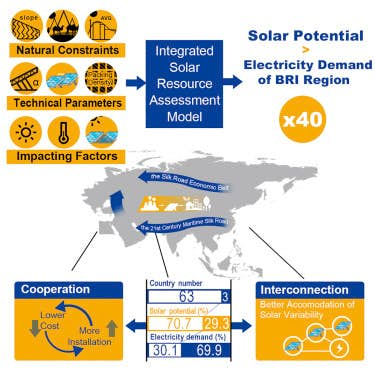 Solar potential for the BRI Intitiative
Solar potential for the BRI Intitiative
Tapping just 3.7 percent of that solar energy potential by deploying 7.8 terawatts (TW) of electrical power capacity could satisfy BRI's projected regional electricity demand for 2030. Doing so would require an investment of approximately $11.2 trillion and some 88,426 square kilometers of land area, which amounts to about 0.9 percent of China's total land area, according to the researchers' report
They point out that "countries endowed with 70.7 percent of the overall potential consume only 30.1 percent of regional electricity," however. "The imbalance underscores the advantage of regional cooperation and investments in interconnected grids," they highlight.


